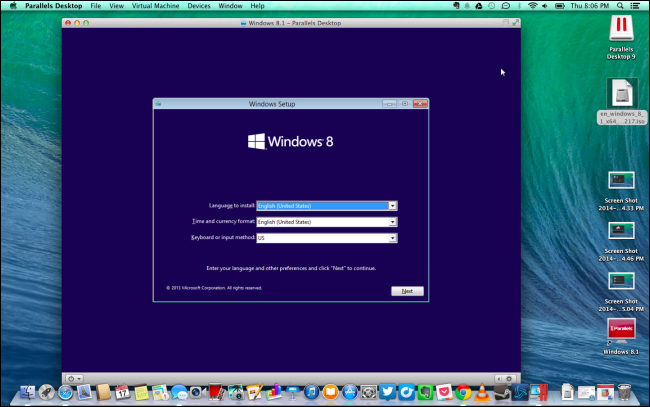

- #Run a windows emulator on mac how to#
- #Run a windows emulator on mac for mac os#
- #Run a windows emulator on mac mac os#
- #Run a windows emulator on mac install#
- #Run a windows emulator on mac upgrade#
#Run a windows emulator on mac install#
To install Windows on your Mac using Boot Camp: iSpring Suite is not considered to be a heavy CPU consuming application, so it will run perfectly and leave computer resources for running other applications.Įvery time you want to switch between the operating systems, you need to restart your computer, which makes concurrent work in both systems impossible. When loaded, the Windows system uses all computer resources, and therefore produces a more satisfying Windows experience, especially with multiple applications running or 3D gaming.
#Run a windows emulator on mac mac os#
If you don’t hold the Alt key, the default Mac OS will boot. Partition your HDD, install Windows on a blank partition, and select a system to boot by holding the Alt (Option) key when the computer restarts. Boot Camp Assistant is a Mac OS application that assists you in your Windows installation and provides all the necessary instructions. PrerequisitesĪn Intel-based Mac (2007 or later) with the latest Mac OS updates.Ī Microsoft Windows ISO image file with the license key.Ī blank USB flash drive (if you want to install the OS from an external drive).įree space on your HDD to install: 55 GB or more.īoot Camp is a technology that lets you install Windows as a bootable operating system on an Intel-based Mac computer.
#Run a windows emulator on mac how to#
In this article you will learn about these two options, their pros and cons, and find out how to use them together. There are two ways to install Windows on your Mac computer: Boot Camp and Virtualization. After installation, your Mac computer will have two operating systems installed: Mac OS and Windows with the option to switch between them or launch Windows as a program on Mac OS.
#Run a windows emulator on mac for mac os#
Please follow me on Twitter, or join me in the AppleHolic’s bar & grill and Apple Discussions groups on MeWe.Install Windows on your Mac computer to run your favorite Windows applications that don’t have analog versions for Mac OS (e.g., iSpring Suite). The latter lets you remotely access up to five PC or Mac computers from iPad, iPhone and Android. Parallels Desktop 16 subscribers also receive complimentary concurrent subscriptions to Parallels Toolbox for Mac and Windows and Parallels Access.
#Run a windows emulator on mac upgrade#
Pro and Business editions are available for a $99.99 annual subscription and you can upgrade from versions 14 or 15 of the solution for $49.99. You can purchase a full Windows license later on. When you install Parallels Desktop on your Mac, the software will automatically detect that you don’t have a copy of Windows installed and will ask if you want to download the OS from Microsoft.

The move away from kernel extensions in favor of native virtualization code has helped deliver useful performance improvements. “Parallels invested more than 25-man-years of engineer programming to take full advantage of the new macOS Big Sur architecture and revamped kernel extensions to deliver our best Windows-on-Mac performance ever for our Parallels Desktop 16 customers,” said Nick Dobrovolskiy, Parallels Senior Vice President of Engineering and Support in a statement. As a result of the abandonment of such extensions on the Mac, the company had to dedicate a great deal of energy to replace them with native Mac virtualization code. One major change in Big Sur is the removal of support for third-party kernel extensions (kexts), which is what Parallels relied on for its emulation.


 0 kommentar(er)
0 kommentar(er)
